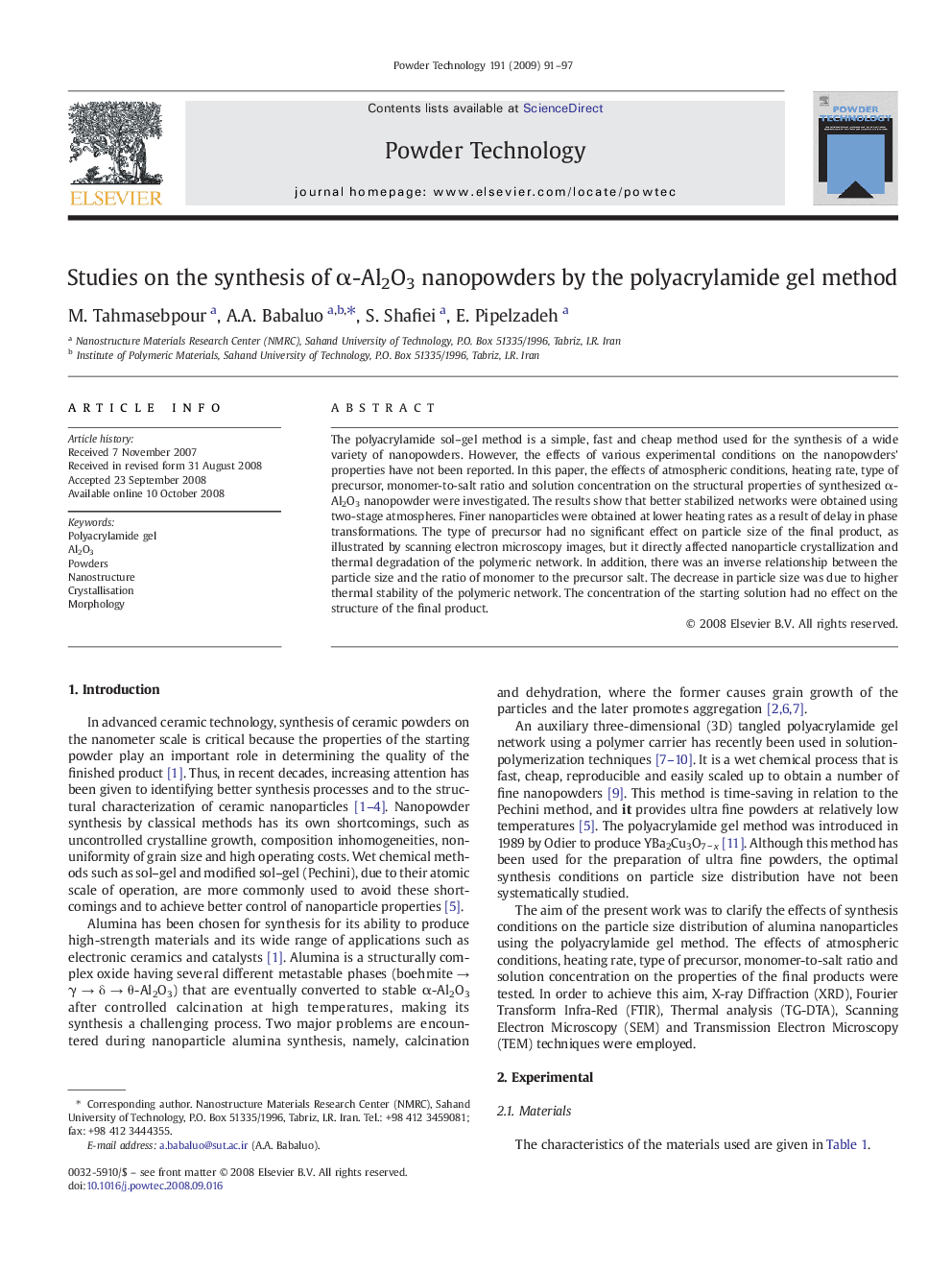| Article ID | Journal | Published Year | Pages | File Type |
|---|---|---|---|---|
| 238568 | Powder Technology | 2009 | 7 Pages |
The polyacrylamide sol–gel method is a simple, fast and cheap method used for the synthesis of a wide variety of nanopowders. However, the effects of various experimental conditions on the nanopowders' properties have not been reported. In this paper, the effects of atmospheric conditions, heating rate, type of precursor, monomer-to-salt ratio and solution concentration on the structural properties of synthesized α-Al2O3 nanopowder were investigated. The results show that better stabilized networks were obtained using two-stage atmospheres. Finer nanoparticles were obtained at lower heating rates as a result of delay in phase transformations. The type of precursor had no significant effect on particle size of the final product, as illustrated by scanning electron microscopy images, but it directly affected nanoparticle crystallization and thermal degradation of the polymeric network. In addition, there was an inverse relationship between the particle size and the ratio of monomer to the precursor salt. The decrease in particle size was due to higher thermal stability of the polymeric network. The concentration of the starting solution had no effect on the structure of the final product.
Graphical abstractα-alumina nanopowders were synthesized via polyacrylamide gel method. Also, the effect of parameters such as surrounding atmosphere, heating rate, type of initial salt, monomers to salt ratio and solution concentration on the structural properties (size and morphology) of synthesized ceramics were studied.Figure optionsDownload full-size imageDownload as PowerPoint slide
